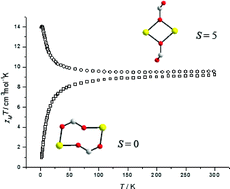A μ1,1- or μ1,3-carboxylate bridge makes the difference in the magnetic properties of dinuclear MnII compounds†
Abstract
Six new dinuclear

* Corresponding authors
a
Departament de Química Inorgànica, Facultat de Química, Universitat de Barcelona, Martí i Franquès 1-11, Barcelona, Spain
E-mail:
veronica.gomez@qi.ub.es
Fax: +34934907725
Tel: +34934039144
b Cristal.lografia, Mineralogia i Dipòsits Minerals, Universitat de Barcelona, Martí i Franquès s/n, Barcelona, Spain
Six new dinuclear

 Please wait while we load your content...
Something went wrong. Try again?
Please wait while we load your content...
Something went wrong. Try again?
V. Gómez, M. Corbella, M. Font-Bardia and T. Calvet, Dalton Trans., 2010, 39, 11664 DOI: 10.1039/C0DT00902D
To request permission to reproduce material from this article, please go to the Copyright Clearance Center request page.
If you are an author contributing to an RSC publication, you do not need to request permission provided correct acknowledgement is given.
If you are the author of this article, you do not need to request permission to reproduce figures and diagrams provided correct acknowledgement is given. If you want to reproduce the whole article in a third-party publication (excluding your thesis/dissertation for which permission is not required) please go to the Copyright Clearance Center request page.
Read more about how to correctly acknowledge RSC content.
 Fetching data from CrossRef.
Fetching data from CrossRef.
This may take some time to load.
Loading related content
